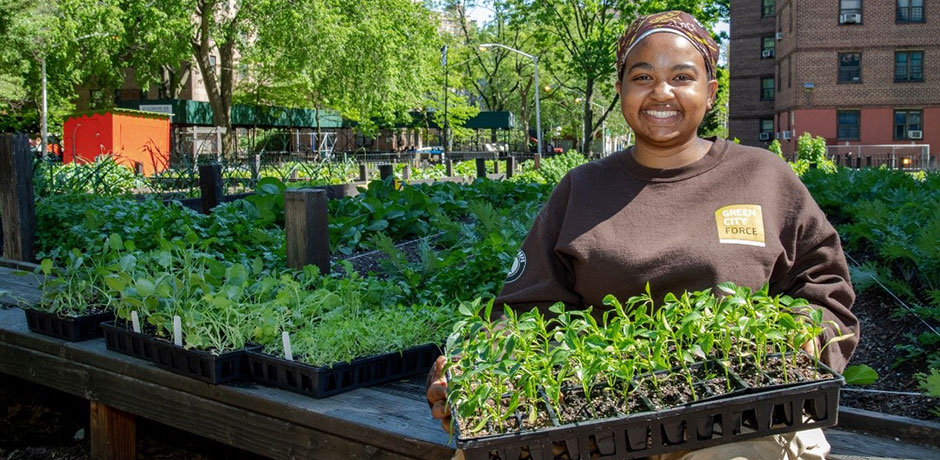Get This Report about City Blooming
Get This Report about City Blooming
Blog Article
Fascination About City Blooming
Table of ContentsCity Blooming Fundamentals ExplainedCity Blooming for BeginnersTop Guidelines Of City BloomingIndicators on City Blooming You Need To KnowA Biased View of City Blooming
Interested in growing food to buy in the City of Chicago? Assuming about starting a community garden? Modifications to the Chicago Zoning Regulation allow farming usages like area yards and city ranches in many components of the city. Below is a list of regularly asked questions relating to the guidelines and guidelines that growers should take into consideration when preparing a city farming job.
The zoning change does not customize any type of other codes dealing with composting, building permits, buying or renting City possessed building, service licenses or ecological contamination. There are existing codes that regulate these issues and they continue to be in complete impact and may apply to your task. Area gardens are usually had or managed by public entities, public organizations or community-based organizations and preserved by volunteers.
Urban ranches expand food that is planned to be marketed, either on a nonprofit or for-profit basis. As a result of their business purpose, metropolitan ranches need an organization certificate. Yes. A community garden is enabled to market excess generate that was expanded on site if the sales are accessory or secondary to the yard's main objective described over.
The Basic Principles Of City Blooming
Composting is allowed but only for plant product that is created and utilized on site. The amount of compost product can not exceed 25 cubic backyards at any kind of offered time according to the criteria in 7-28-715 of the City's Municipal Code. Yes. Due to the fact that the dirt at the majority of brand-new garden sites needs modifying, compost, dirt, wood chips, or other materials can be acquired to construct or boost the expanding space - urban gardening.

If a building permit is called for then the hoophouse will certainly be considered an accessory structure. You can discover more concerning the building license demands by calling the Division of Structures. The 25,000-square-foot dimension limitation is intended to avoid a solitary neighborhood yard from dominating a given block or taking away from the block's existing property or industrial character.
The limitation does not use to yards situated in Public Open Room (POS) districts. Can there be even more than one area yard that is 25,000 square feet on a single block? Fence is not called for, nevertheless, gardens that have big vehicle parking locations might be called for to install secure fencing or various other landscaping functions.
The 7-Second Trick For City Blooming
B1 & B2 districts require that all business usage tasks be performed indoors. R districts restrict commercial activity. The regulations reflect the objective and intent of the Zoning Code. Is secure fencing needed for city ranches? Yes. Fencings might be needed, along with landscape design and testing, for sure auto parking locations and exterior Learn More job or storage areas depending on location and the particular activity taking area.
Urban ranches need structure licenses and zoning approvals prior to building and construction (container and raised bed gardening etc.). Various other types of city testimonial might be needed depending on particular structures, tasks, size, landscape design, licensing, public heath and stormwater monitoring problems.
The Department of Organization Matters and Customer Protection can aid identify the specific kind of company permit that's called for. Off road car parking is required for a lot of commercial tasks in Chicago. The required number of auto parking areas is based on the number of employees working on website and not the square footage of the growing area.
Some Known Questions About City Blooming.

Yes. A metropolitan ranch can market compost product generated on website, nevertheless, the procedure must adhere to the regulations in 7-28-715 of the Chicago Municipal Code. Yes. Aquaponic systems are permitted indoors on metropolitan farms in several zoning areas. A zoning testimonial and building permit is required in order to mount structures or systems and a service permit is called for as defined over.
Approximately 5 hives or nests of honey bees may be kept as an accessory use. Beekeepers have to sign up with the Illinois Division of Farming. For even more info regarding the suggested zoning change you may get in touch with the Division of Housing and Economic Development, Bureau of Preparation and Zoning at 312.744.8563.
, which takes place in rural locations at the edge of suburbs.
The Only Guide for City Blooming
It can include a motion of organic farmers, "foodies" and "locavores", who seek to form socials media established on a common values of nature and community holism. These networks can establish by means of official institutional assistance, ending up being incorporated right into local town preparation as a "transition community" movement for lasting metropolitan development.
In either situation, the much more direct accessibility to fresh veggie, fruit, and meat items that may be know through urban farming can boost food protection and food security while decreasing food miles, causing reduced greenhouse gas emissions, thereby adding to climate change reduction. Some of the first evidence of city agriculture comes from Mesopotamia.
Report this page